 Dune Grass II
Dune Grass IIThe once and future dunes. This photo represents the past, present, and future of the dunes. On one hand, the sand under my feet is accreted land dominated by European Beach Grass and just a few beach pine. Yet to the right is the future, that of a beach that has a forest close by the sea.
While this may be the present view on the beach, it by no means represents the likely future. The relentless evergreens, the beach pine and sitka spruce will eventually dominate and once again reclaim their rightful place in beach evolution. This will set up an epic battle between the land and sea.
 Ok..let us start at the beginning and there is no better place to start than the beach circa 1900. At that time, the dominant dune grass growing on the Long Beach Peninsula was American Dune Grass and suffice to say, while it was the primary dune grass, it wasn't as dominant as present day dune grass.
Ok..let us start at the beginning and there is no better place to start than the beach circa 1900. At that time, the dominant dune grass growing on the Long Beach Peninsula was American Dune Grass and suffice to say, while it was the primary dune grass, it wasn't as dominant as present day dune grass. This aerial photo was taken in 1926 and is looking north from present day Long Beach towards Cranberry Road. The North Jetty had been in place about 10 years and there is a pretty clean sandy beach plain without much dune grass.
This aerial photo was taken in 1926 and is looking north from present day Long Beach towards Cranberry Road. The North Jetty had been in place about 10 years and there is a pretty clean sandy beach plain without much dune grass.After construction of the South and North Jetty and the subsequent channelization of the entrance channel of the Columbia River, the future maintenance of the channel became a matter of importance. The Clatsop Plain was a sandy and open plain spit. Someone noticed that sand was constantly blowing from the sandy plain to the Columbia River and in an effort to halt that sand movement, European Beach Grass was planted by the Soil Conservation Service. The time of this planting was post WWII as I recall reading (and I apologize not having the source documents to quote).
European Beach Grass is a much more vigorous colonizing grass than the native species and it quickly gained a foot hold on the Clatsop Plain and then spread north across the Columbia and towards Long Beach and on up the Washington Coast. The accreted lands of the North Beach Peninsula provided fertile ground for grass, thus the immense grassy swards out in front of Seaview and north were and are today dominated today by European Beach Grass by possibly 95% with the remainder the original American Beach Grass.
 At first, it wasn't that dominant. This 1950 aerial photo is in front of present day Long Beach and there are patches of dune grass here and there but the sandy plain is quite dominant. The North Jetty has been in place a tad over 3 decades and it doesn't look like the dune grass (probably European) is getting a super foot hold but it is appearing.
At first, it wasn't that dominant. This 1950 aerial photo is in front of present day Long Beach and there are patches of dune grass here and there but the sandy plain is quite dominant. The North Jetty has been in place a tad over 3 decades and it doesn't look like the dune grass (probably European) is getting a super foot hold but it is appearing.These grassy fields or swards or I should say, the nature of them, is note known for prehistorical times. In an effort to figure out what the beach might have looked like I thought back to the late 1950's and 1960's when I was growing up in Ocean Park.
The dune area between the primary dune and back dune was a mixture of sand and beach grass, mostly beach grass with low open sandy areas that were dry in the summer and water filled in the winter. No pine trees at all. I can recall riding in the families '56 Ford Ranch Wagon and as we were headed south on SR 103 (affectionately known as the "front road" back then), I could easily see the breakers of the ocean..say in the vicinity Tides West. Hard to believe now. However, it is likely that most of the dune grass I was looking at was dominated by the European variety. And off course, few if any pine trees or spruce blocked the view.
As I grew older and armed with a lot of questions, I wondered what the original beach might have looked like. Several images kept returning to my mind. One was of the Vancouver Island outer coast. In 1983 I ocean kayaked from Tofino to Hot Springs Cove and noticed how narrow the "dune" environment was on Flores Island and Vargas island. The "dune" was narrow in many places, perhaps only 50 to 100 feet in width and then salal and more brushy vegetation took over and that was immediately adjacent to Sitka Spruce. I also remembered wandering along "Long Beach" (near Tofino) and noticed the same thing.
Years later, while working at the City of Long Beach (Washington of course) I looked at the famous photo in City Hall that depicts a gathering of city residents in front of the post office and women's reading room (now the City Hall building on Bolstad). The 1900's era photo was apparently taken looking north from the porch area and you can clearly see short scrubby vegetation of ferns, Sitka Spruce, possibly salal. I also ran across a water color by Joe Knowles' sister (name eludes me) this painting was done..possibly in the Seaview area in the 1920's and it also depicts a narrow beach dune area.
The upshot and my conclusion of this analysis is that the beach rapidly accreted post jetty construction and then the sandy plain was taken over and dominated by European Beach Grass..then Beach Pine and Sitka Spruce are slowly taking over. This process is actually pretty quick and in my lifetime, that is in the next 30-40 years, the grassy swards behind the fore dune will make this transition from somewhat sandy plain with occasional hummocks to total grass area to an areas with some evergreen trees to total domination by evergreens. This will happen before our eyes yet will go almost completely unnoticed.
Take a hike from Seaview Beach Approach to Beard's Hollow on Discovery Trail and you'll get the picture. I would predict that in within 50 years, the "dune" portion of our beach will again be narrow and svelte, as it likely was in the old days..old days. Two aspects of human culture will affect this. Fire and tree cutting.
During pre-historic times, it is probably that occasional fires (either started by humans or started by the very rare lightning storm) may have swept through the beach. In modern times, such large and ecosystem dominating fires are uncommon with some exception. That last two large fires were the ones near Ocean Butte Condominiums and the very large one at Benson Beach. But we really haven't had large fires.
Some owners cut pine trees for view or a fire protection zone (DNR recommends a 200 feet clear zone and limbing trees up 6' to prevent fast moving grass fires from becoming crown fires). This essentially keeps some beach areas in a beach grass look zone which is dominated of course by European Beach Grass.
The end result could be a patchwork of open areas and treed areas near shore. In the end..this might be reasonably close to what it may have originally looked like..of course we will never know the answer to the question. What was the beach truly like circa 1800?
This also squares with another of my observations..that is the occasionally erratic and unorganized behavior of humans is not to far off from the random reality of nature. We just to speed up the process to a pace far faster than the "natural" one.

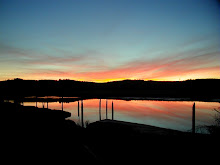
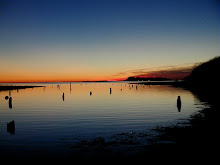
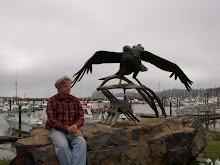




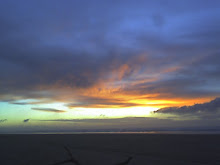
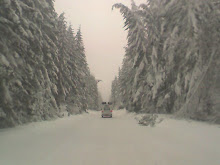
No comments:
Post a Comment